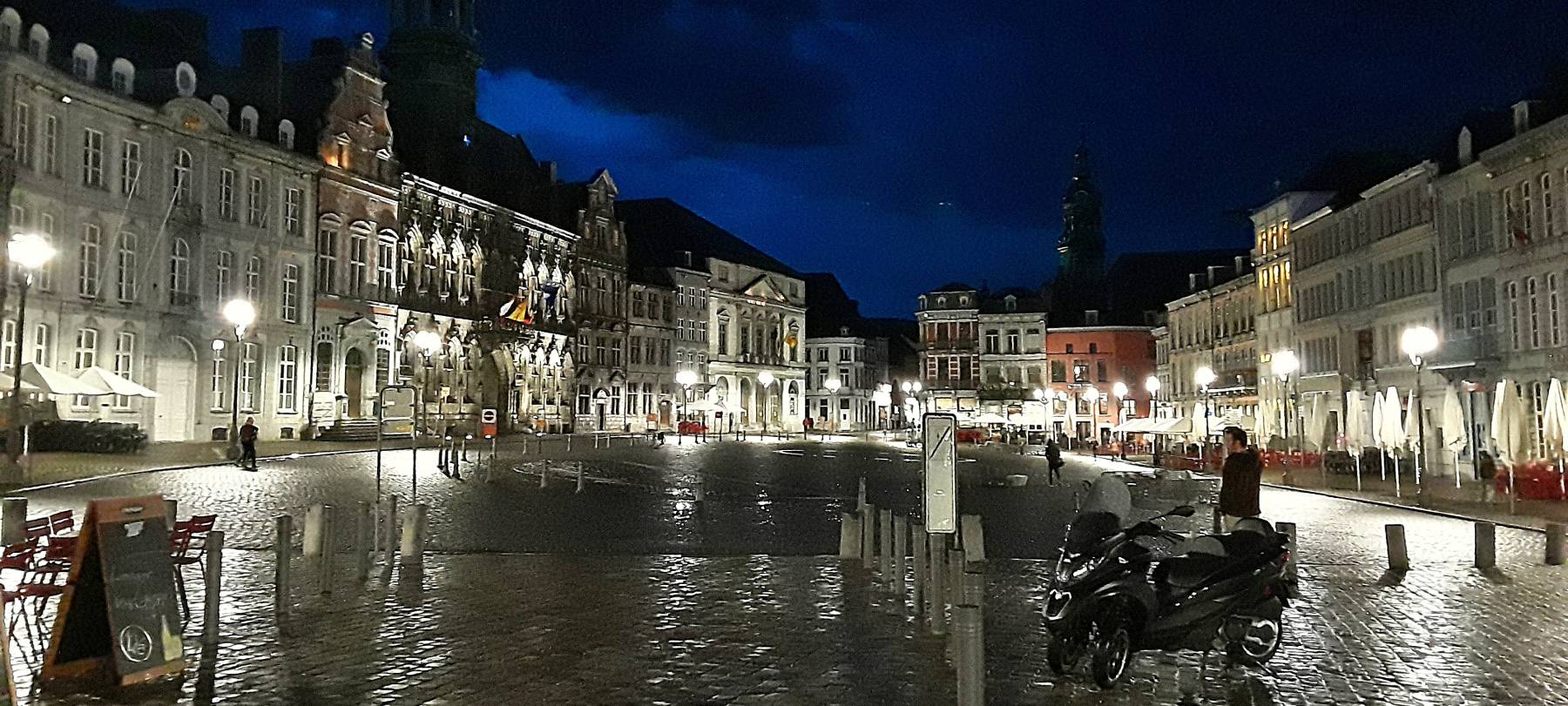
Visiting Mons
Traveling to Mons
I went to Mons to teach a cybersecurity course to NATO. It's in Belgium near the French border. Mons is an interesting city with a beautiful old town square. It's surprising that it doesn't get more visitors. And, I was getting paid to go there! Off I went, by plane and train.
I flew on KLM from Chicago to Amsterdam, changing at Amsterdam from the Boeing 777 to an Embraer E175, and continuing to Brussels. Yes, it made sense to me to switch to trains at Amsterdam, but someone else set up the flights. Fine, it's more KLM/Delta miles to maintain the elite status.
The Brussels airport has a train station below ground. It's easy to buy tickets, but then you have to be careful to watch for your train.
Belgium uses both Flemish and French; Flemish to the north of Brussels (where the airport is) and French to the south. Brussels, as we call it in English, is Brussel in Flemish and Bruxelles in French. Those two names are pronounced basically the same.
Mons is the local name for my destination, in the French-speaking part. But in Flemish it's called Bergen, a totally different name.
The information panels in the train station alternate between Flemish and French. But since the airport is to the north, the displays spend more time in Flemish.
Plus, I'm jet-lagged. I didn't sleep much on the overnight flight and it's something like 3 AM in the time zone I'm acclimated to.
I caught my train!
We stopped at the Brussels stations, and now we're rolling through the farmland between Bruxelles and Mons. Between Brussel and Bergen. Whatever. I just need to stay awake so I can get out at the right city.
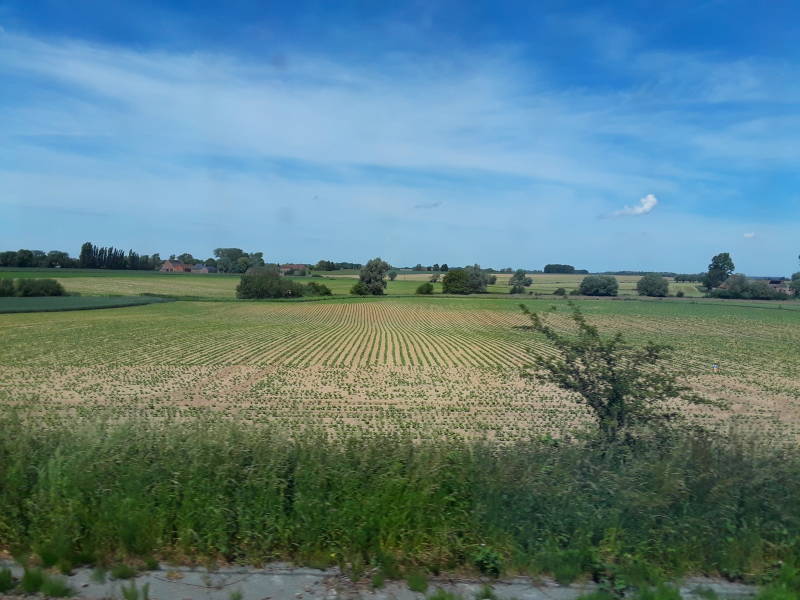

I made it! I'm in Mons. The large white framework is a new modern station that has been under construction for a few years now. The old station building, dating from 1841, was demolished six years before my visit. The Mons station was operating out of a temporary building.
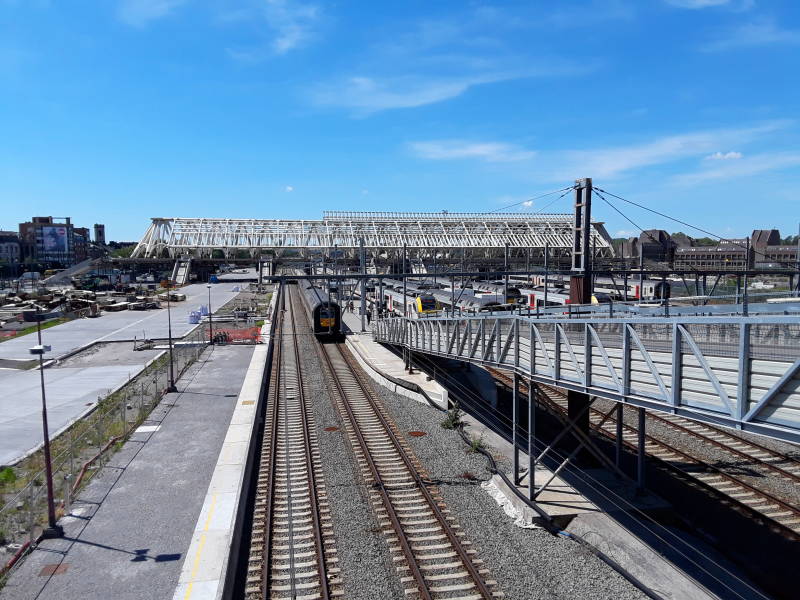
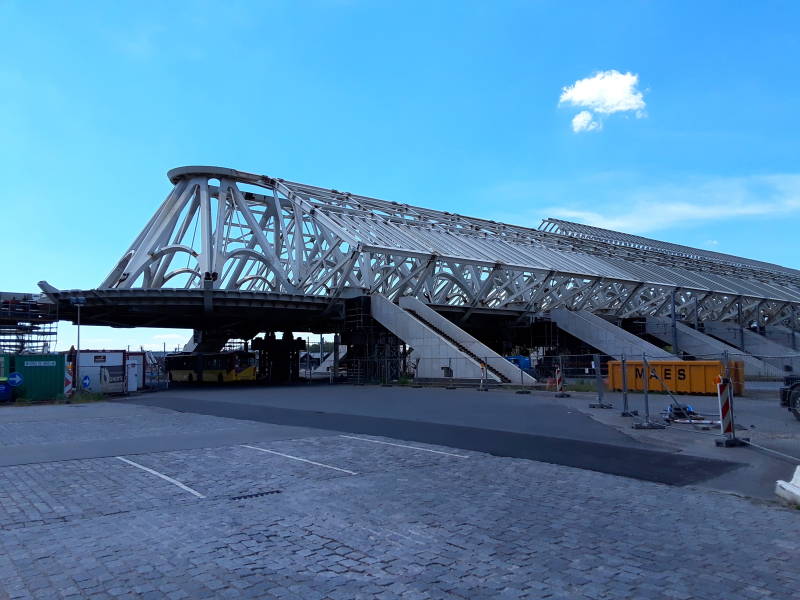
The training company had me set up with a room in a hotel right next to the station complex, on the side away from the town center.
It's time to check in, unpack my stuff, have some coffee, and head out to explore Mons.
Exploring Mons
NeolithicTourism
Mons is old. People lived around here during the Neolithic period of prehistory. When Julius Caesar arrived in the area in the first century BCE, it was settled by the Nervii, a Belgian people. The Romans built a castrum here, a fortified settlement, and called the place Castrilocus.
Just up the hill from the train station I came to the Saint Waltrude Collegiate Church. It and the belfry tower, visible in the background to the left, form the city's distinctive profile.
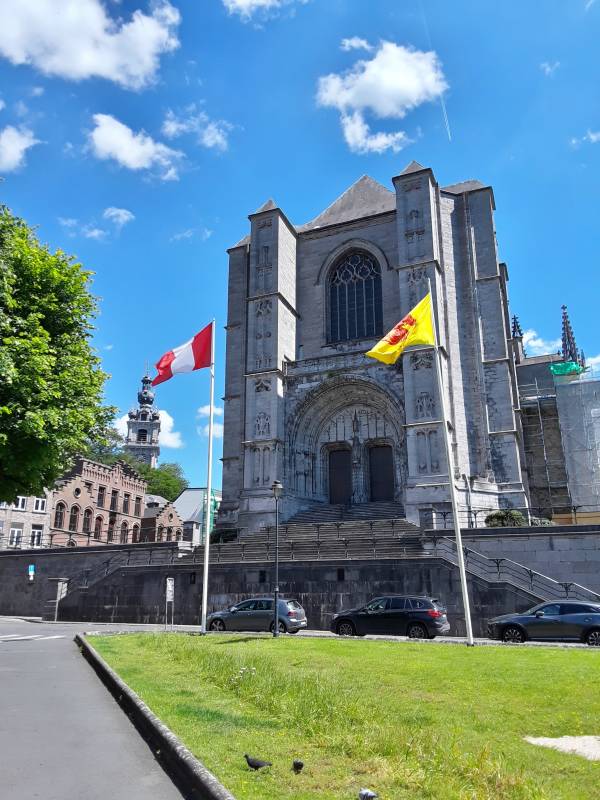
The construction of today's church started in 1450, replacing other church buildings that had occupied the central hill that gives Mons its name. Saint Waltrude or Waudru had formed a religious community here, probably in the second half of the 7th century. This was just after Saint Ghislain and two of his followers built a chapel here dedicated to Peter and Paul.
The main construction stopped in 1691. The original plan for the church has never been completed.
What did get finished is made of local sandstone, blue stone, and bricks. The plan is shaped like a Latin cross, 109 meters long, 36 meters wide, and 25 meters tall.
The choir section, seen in the first picture below, is surrounded by an ambulatory and 15 radiant chapels.
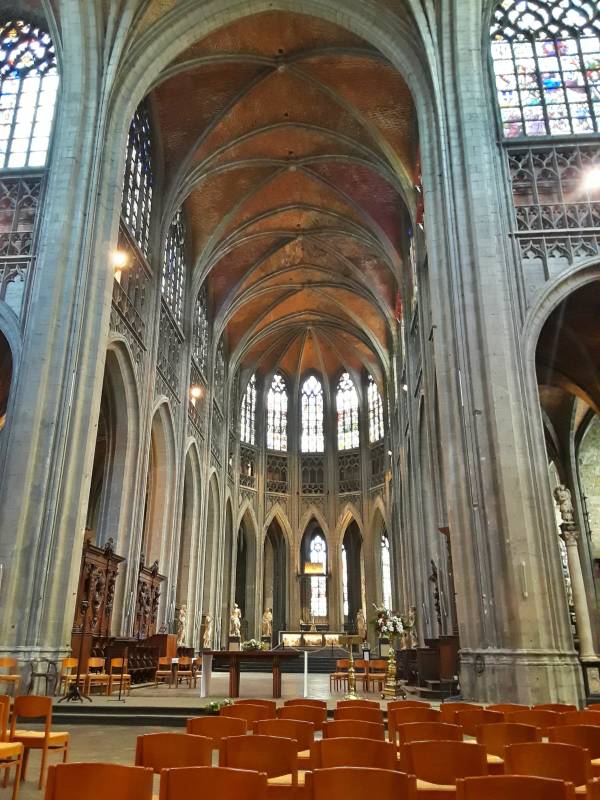
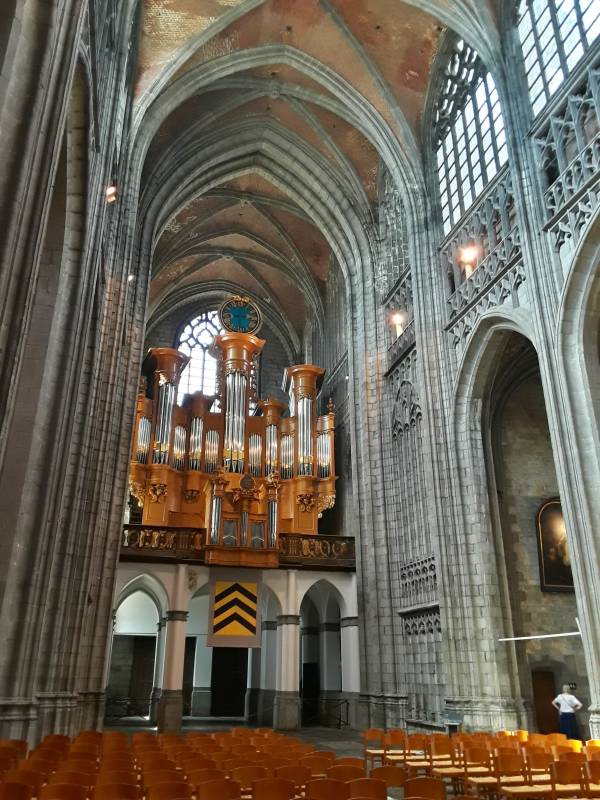
France controlled the area when the French Revolution began. So, Mons and this church came under the Revolution's extreme anti-religious regime. The church was shut down and the building was used as a stable. There was a plan to demolish it, as with many other churches in France. But like most of those, the revolutionaries never got around to it.
The church has an exceptional set of stained glass windows, 21 of them dating from the 16th century. It's the most complete set of stained glass windows in Belgium.
Moving on up the hill, we come to the belfry. It was built in the 1600s, it now contains a 49-bell carillon. Victor Hugo told his wife about it in a letter:
Picture yourself a huge coffeepot, flanked beneath its belly by four smaller teapots. It would be ugly if it was not big. Greatness saves.
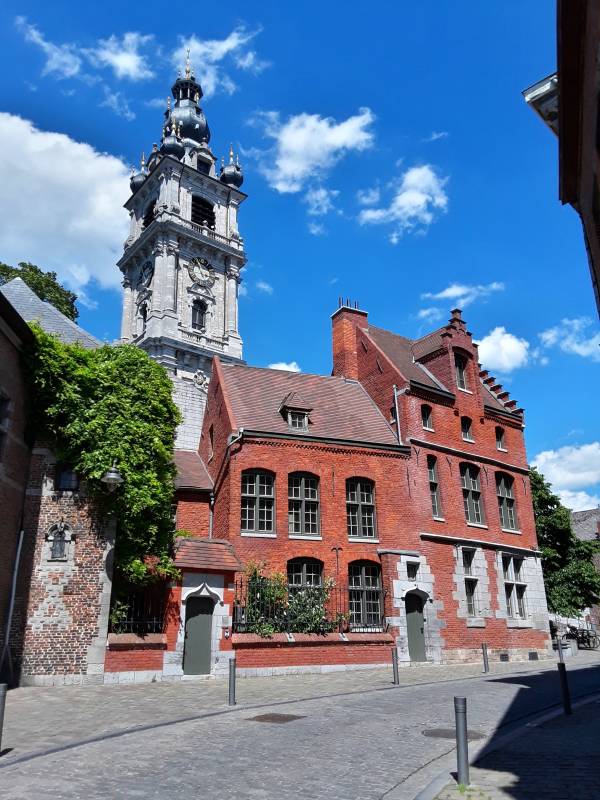
Economic Problems
In the mid to late 1800s, this region of Belgium was booming. There was iron ore and coal, and the industrial revolution needed things made from iron and steel. Treating Wallonia as if it were an independent country, and calculating the GDP per capita, Wallonia was the second most prosperous country in the world, close behind Britain.
A French geographer calculated in 1850 that this region of Belgium had more steam engine power than all of France.
If they had crippling levels of opioid addiction, and a history of much worse education, and a long tradition of racism, it could be as bad as America's Appalachia.
But after the two world wars of the first half of the 20th century, the local economy was a wreck. Wallonia had nothing but old and war-damaged mines and steel mills, and the iron and steel market wasn't what it had been. Unemployment is higher and income is lower here than in the rest of Belgium. The rate of business bankruptcies is staying ahead of the rate of new business creation. The educational system is also worse than in the rest of Belgium, meaning that local people are less prepared for what jobs are available.
There are some interesting projects underway. Several projects around Mons use geothermal energy. There are deep sources of hot water here, around 70°C. The hot water can be used directly for heating, or to drive electrical generation. A deep hot water source at Saint-Ghislain is being used in place of what would be around 1,000 tons of oil per year.
Looking forward, a source at Ghlin could provide over 100 cubic meters of 71°C water per hour. There's a plan to use geothermal heating and power around the new train station. It's hoped that several potential projects in the region could provide a total of 40 megawatts of power within a few years.
The Town Square
Just over the top of the hill we come down into one end of the old town square.
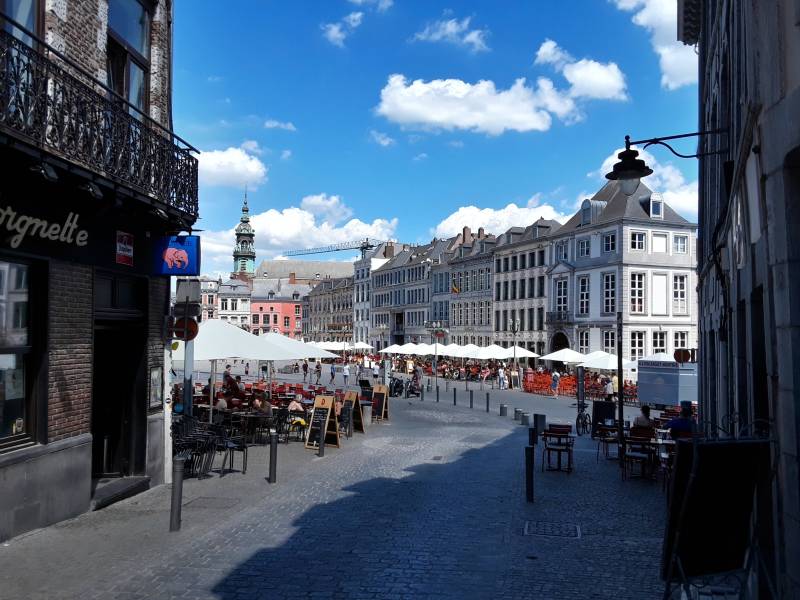
Every year on Trinity Sunday 57 days after Easter, the Ducasse or Doudou takes place here. The shrine of Saint Waltrude is paraded through the city, and there's a reenactment of Lumeçon, the combat between Saint George and a dragon.
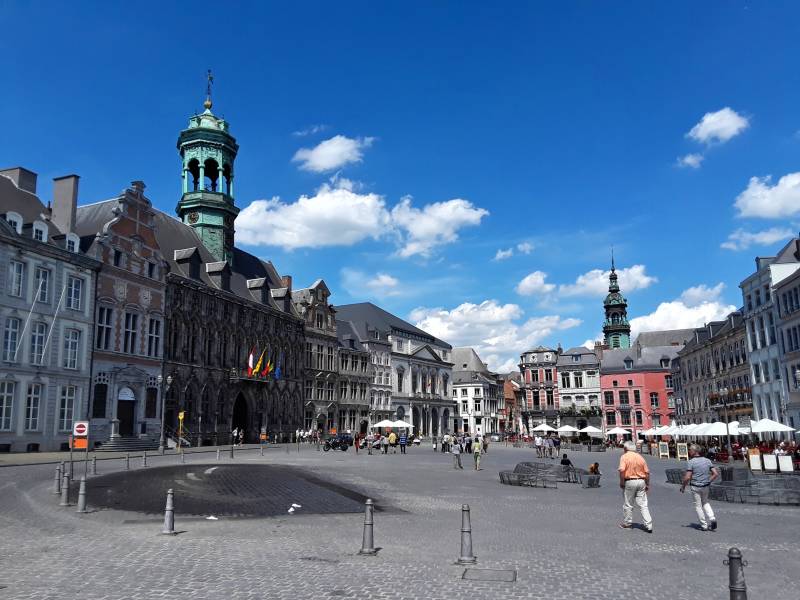
It's a beautiful square, lined with cafés. It's surprising there aren't more visitors. But over half the visitors to Mons are from elsewhere in Belgium, it isn't swarmed by foreigners. The tourists visiting Mons are:
- 29%: Flemish-speaking Belgians
- 27%: French-speaking Belgians
- 12%: British
- 12%: French
- 10%: Dutch
- 5%: German
- 5%: Everyone else, including me
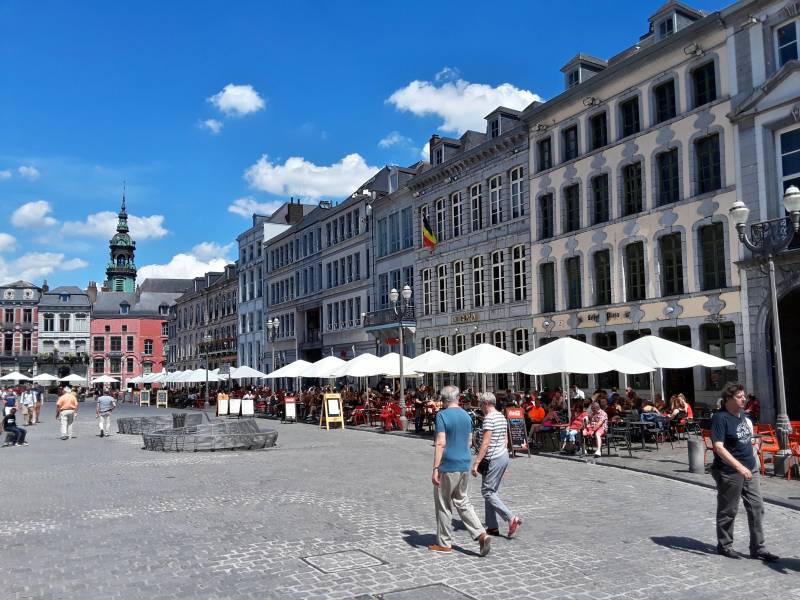
Mons became a fortified city in the 1100s. Population and trade grew
The Town Hall is at the center of one side of the square. Its construction started in 1323. Additions and changes and renovations continued until 1477, when the gunpowder magazine in the nearby arsenal exploded. Most of what you see is from after the reconstruction needed after that explosion. Today it's a mix, there were modifications through the 18th and 19th centuries, but the bell tower contains a bell from 1390, before the explosion.
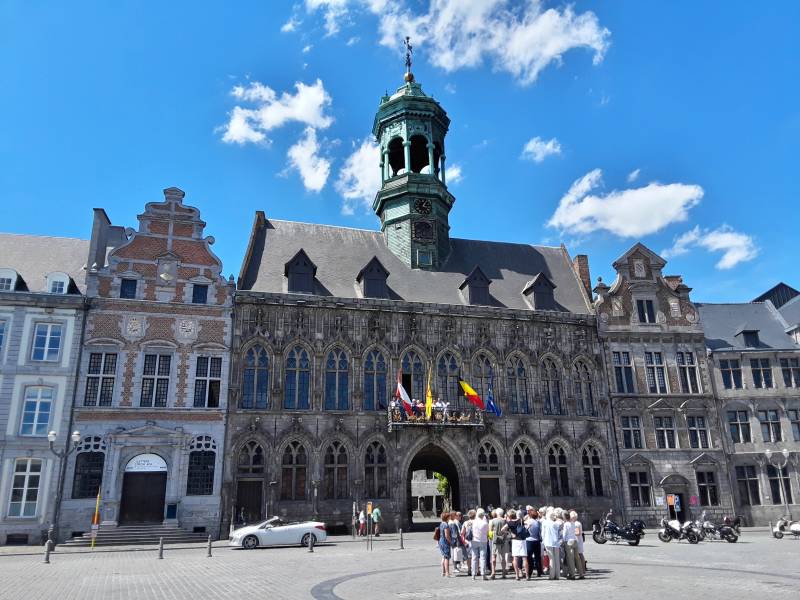
Occupations by outside forces started. Control of the area passed back and forth between Roman Catholic and Protestant factions, and between the Dutch, the French, the Spanish, and the Austrians.
The casemates are south of the central square, near the old city walls. They're fortified military storage also containing the old military bakery. They date from when the Kingdom of the Netherlands controlled this region in 1814–1830.


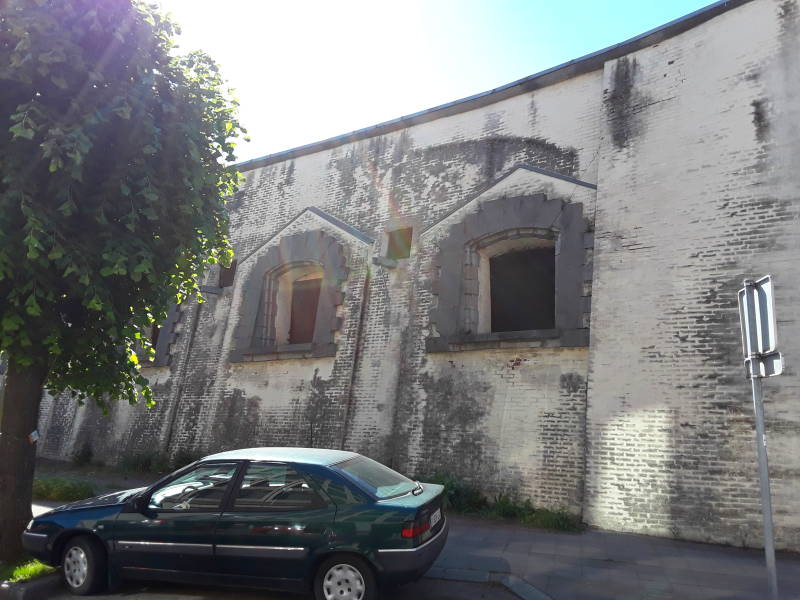

Belgium finally won its independence in 1830. The new country decided to disassemble surrounding walls like those at Mons. That only happened in the 1860s.
L'Hospice Glépin is nearby. It was a home for the elderly, built by the philanthropist Henri Glépin (1846–1896).
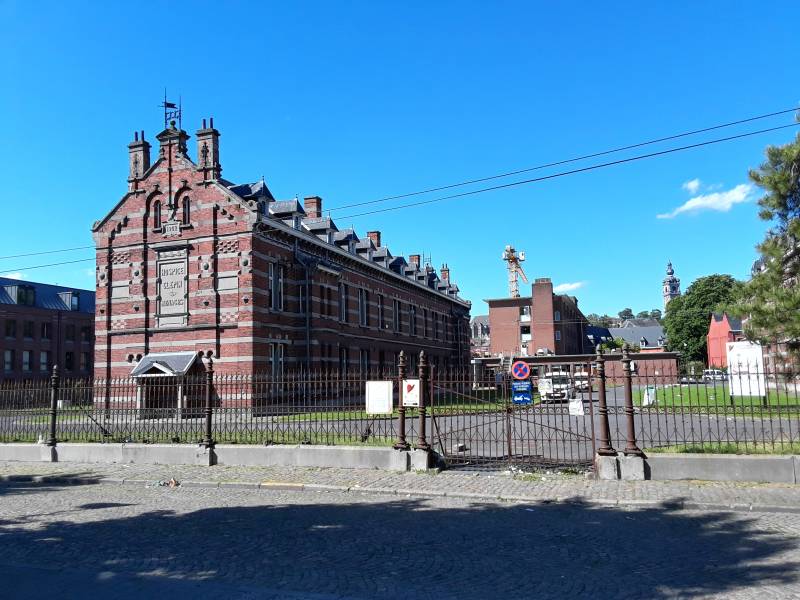
The Abbey of Val des Écoliers was founded in 1252. It was suppressed during the French Revolution, and was used after that as an arsenal, meeting rooms, and shops. The city converted it into the Civil Hospital in 1805, it operated until 1876. Today only one bell tower remains.
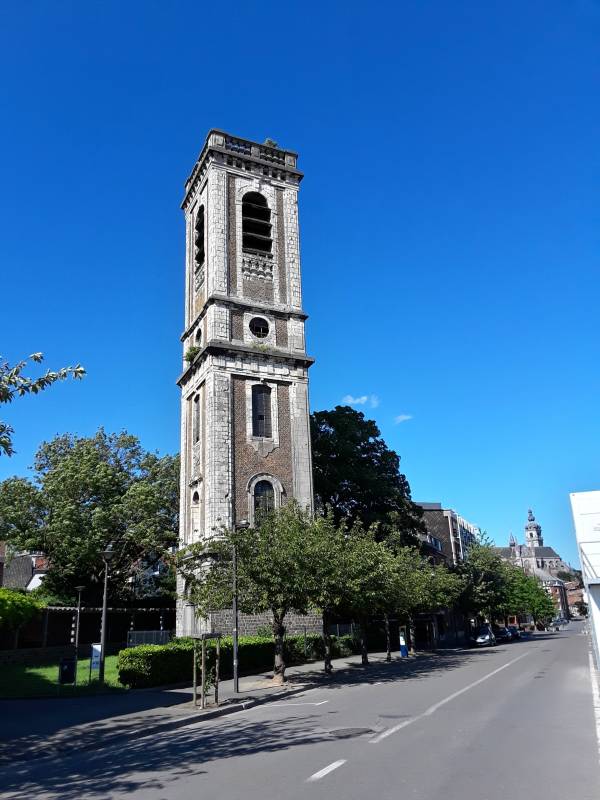
Days in Mons
The hotel had a great breakfast buffet.

Salmon, ham, several cheeses.
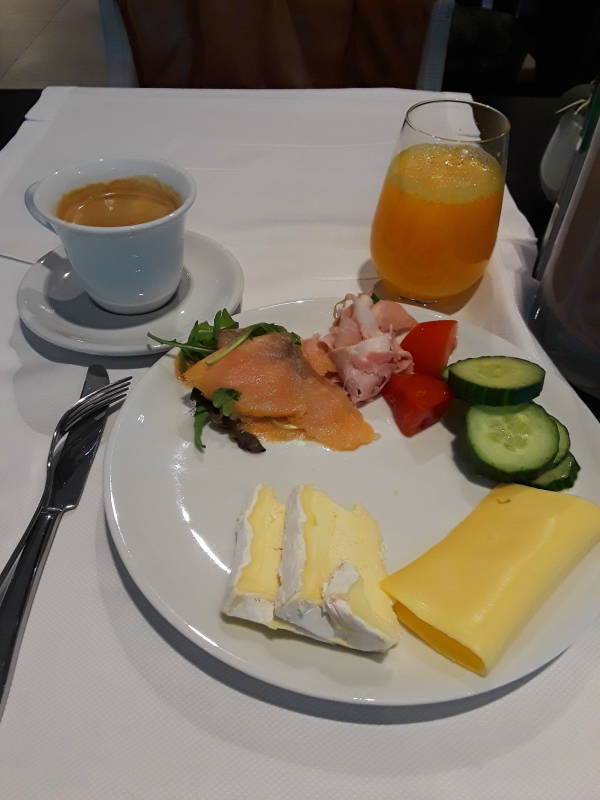
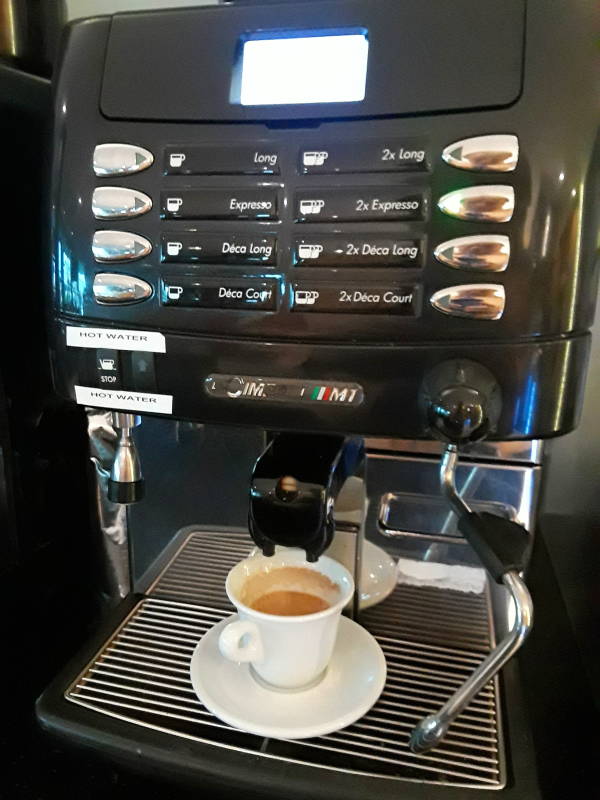
Given my jet-lagged state, the coffee was crucial. The cup could hold two double espressos. Two of those cups got my day off to a well-caffeinated start.
NATO SHAPE
Notes on passing the (ISC)2 CISSP examI was in Mons to teach a course to NATO. Specifically, a test-prep course to help them prepare for and pass the (ISC)2 CISSP cybersecurity certification exam. A test like that is largely a language test: recognize and select their very specific arbitrary wording.
It's a tough exam for a native English speaker to take in English.
There were 14 of them, one native English speaker from each of Canada and the UK. The other 12 were from Italy, Poland, Turkey, Spain, and Portugal. It was not a fun week for them, and the eventual test was unlikely to go well.
NATO's Supreme Headquarters Allied Powers Europe or simply SHAPE was relocated from outside Paris to here in 1967. Belgian authorities wanted SHAPE, an obvious military target, to be at least 50 kilometers from Brussels. Mons was also even further away from NATO facilities in The Hague, Netherlands. And, Belgium felt that the Mons area needed an economic boost.
SHAPE is the headquarters of NATO Allied Command Operations, controlling all NATO operations worldwide.
The commander of NATO Allied Command Operations has the title SACEUR or Supreme Allied Commander Europe, and has always been a U.S. four-star general officer or flag officer who is also Commander, U.S. European Command. Dwight D. Eisenhower was the first SACEUR.
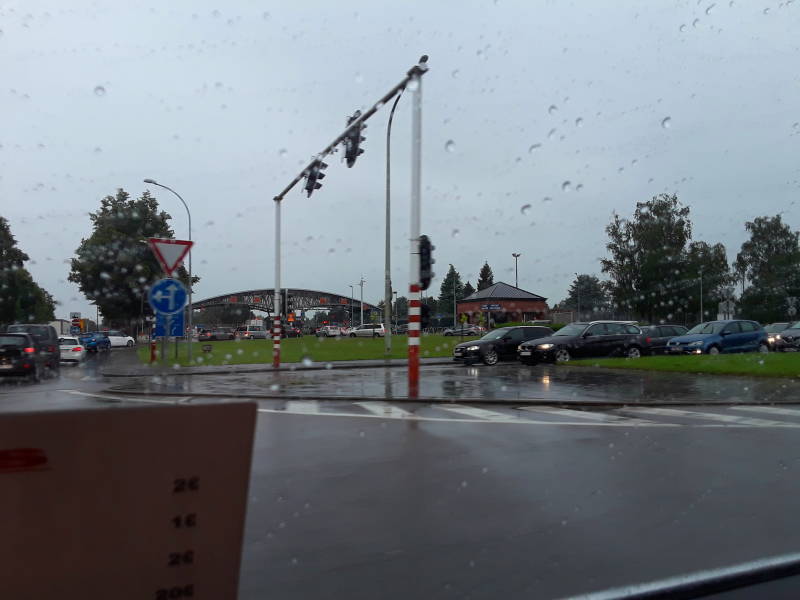
NATO SHAPE did stimulate the local economy some, but at the expense of increased rents. Local property owners could now ask for more rent, as NATO staff could pay more than the locals of the depressed economy. Also, serving military personnel spend much of their money on tax-free purchases at SHAPE's on-base shopping center.
It did occur to me that while I went to the main square almost every evening, I never saw anyone there who looked like they were in the military.

I was pleased to get through the week without once referring to it as either SHAEF or SHIELD. I was, of course, ready to blame any such error on jet lag, as it takes me close to a week to get re-synchronized.

There are some significant canals in this part of Belgium, built to move the coal, iron ore, and finished product. The trip back every evening took me over one of the main canal branches, seen below.
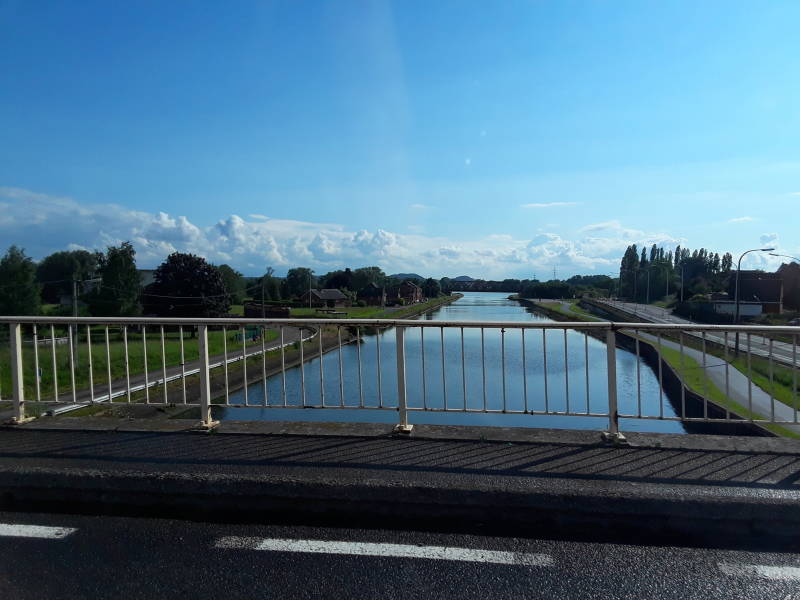
Every morning we passed a very large turning basin where three canals join.
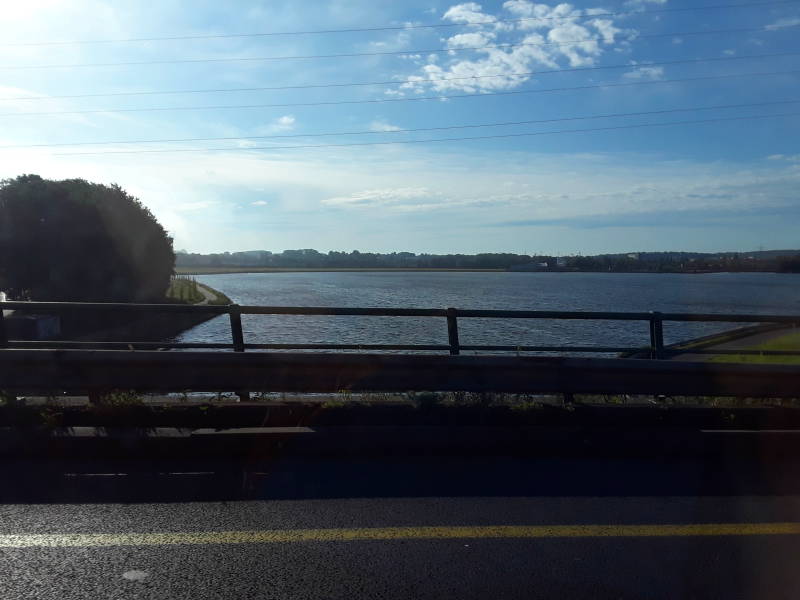
Evenings in Mons
There were some cafés on the semi-circular square where the original train station had stood. And some day, the new one will stand. The evening after the first day of class I got no further than here. This was across the train station complex from my hotel.
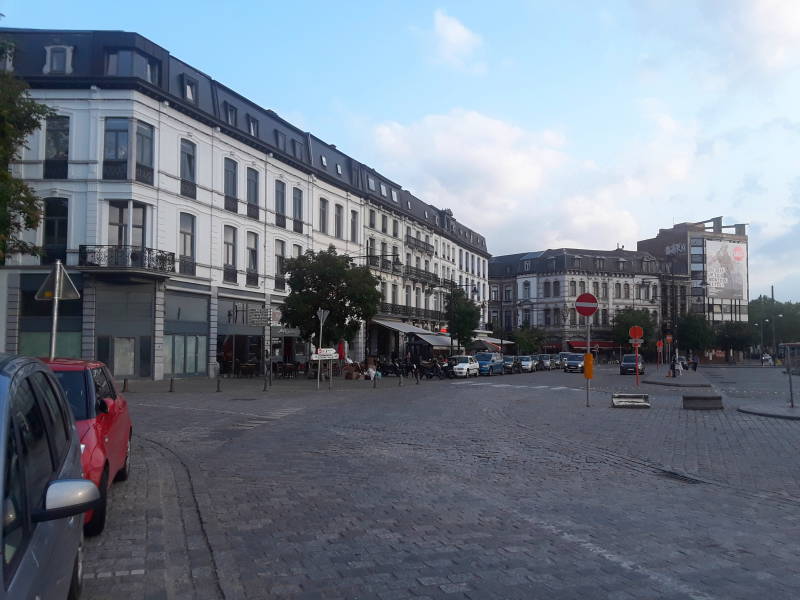
Other evenings I would go to the old town square. I was in Mons, I should take advantage of that!

The archway passing through the Town Hall contains a number of commemorative plaques. The first one below commemorates the Canadian Corps recapturing Mons on 11 November 1918 after 50 months of German occupation. As it says:
The Battle of Mons was fought here in late August 1914, it was the first World War I battle fought by the British Army. They were forced to retreat, Germany seized the town, and held it through the entire war. From Britain's point of view, the very first and very last shots of World War I were fired in Mons.
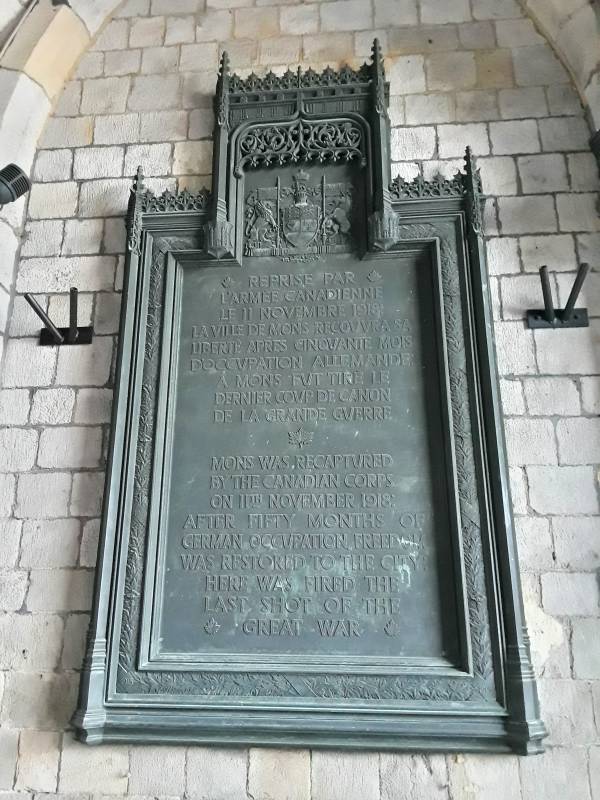

The last one above starts:
ERECTED BY THE 5th ROYAL IRISH LANCERS TO THE MEMORY OF THE FOLLOWING COMRADES WHO FELL IN THE CAUSE OF THE ALLIED DURING THE GREAT WAR 1914–1918.
Then at the bottom, in French, it says that the regiment took part in the fighting near Mons, in the retreats in the month of August 1914, and in the victorious return for the armistice day of 11 November 1918.
The first one below commemorates people from Mons and the surrounding area killed when the Germans moved in at the start of World War I.

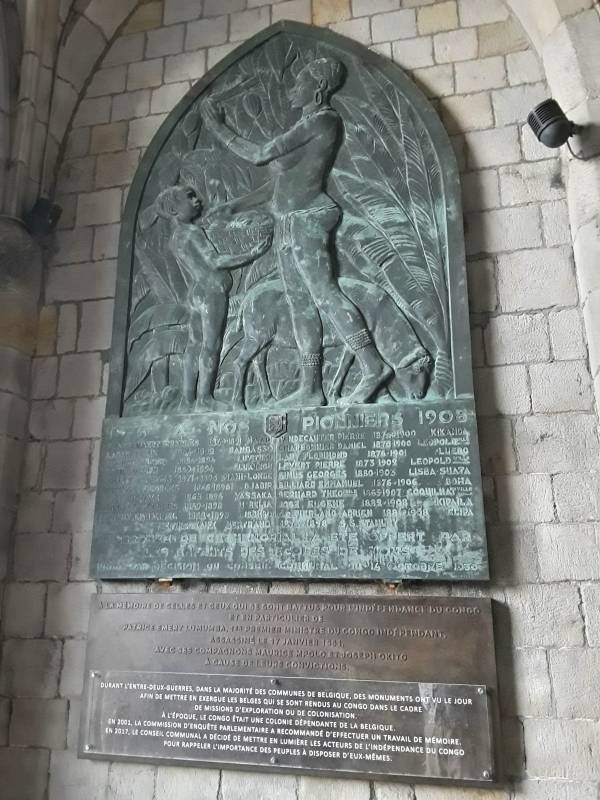
The last of the large memorials is to "Our Pioneers" of 1876–1908, Belgians killed before the Belgian colony of Congo was formally established in 1908.
Just below that is a plaque in memory of those killed and injured in the fight for independence of the Congo, especially Patrice Emery Lumumba, the first Prime Minister of an independent Congo, assassinated 17 January 1961, with his companions Maurice Mpolo and Joseph Okito.
And just below that is a plaque explaining that monuments to Belgian colonists in the Congo appeared in many Belgian communities between the two World Wars. And that attitudes since then have shifted, these pro-colonialization memorials are artifacts of their time, and now the emphasis is and should be on those on the side of Congo independence.
Detective Novels in FranceHeavy stuff. It's time to get dinner, and then retire to a nearby bar for a Leffe and some French practice.
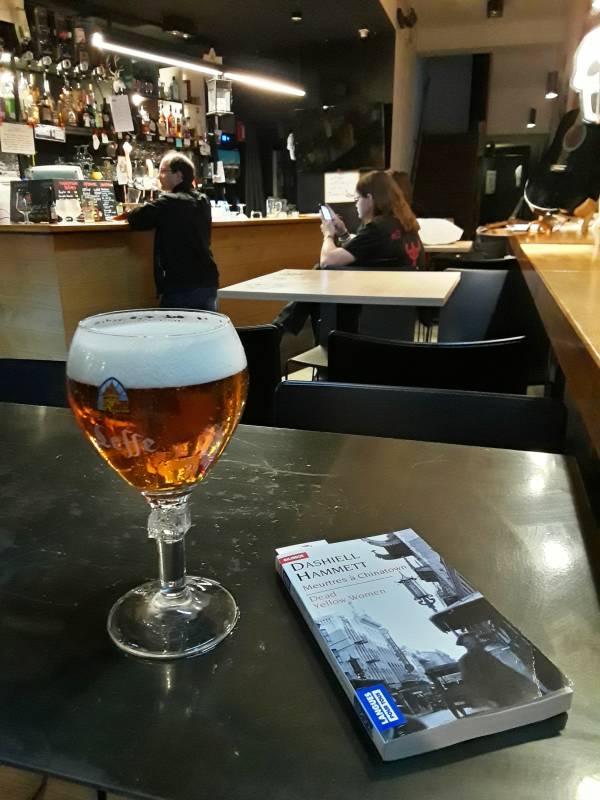
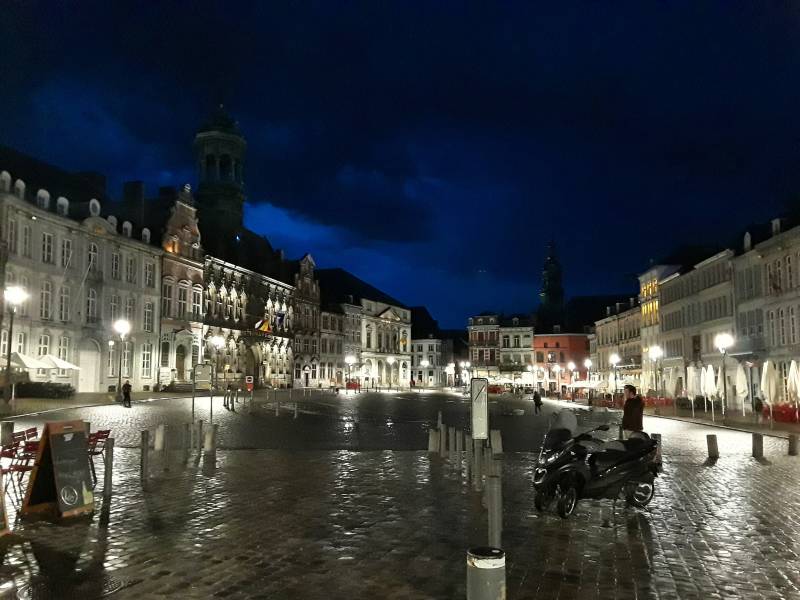
Returning to Brussels
Once the class was over, I was going to Paris for a week. High-speed Thalys trains between Brussels and Paris no longer stop in Mons. It wasn't profitable for the Belgian railway. So, it was 60 km from Mons back to Brussels, and then a Thalys 240 km from there to Paris.
Here's the list of trains leaving Mons in the next 100 minutes. Any train listing Bruxelles-Central will take us to the Bruxelles-Midi (or Brussels South) station, the main station. The 17:22 one is à quai, at the platform, ready for boarding.

Below is the paper version. I'm taking the 17:22 train, the IC 3717.
| 17:22 | Mons |
| 17:31 | Jurbise |
| 17:41 | Soignies |
| 17:47 | Braine-Le-Comte |
| 18:09 | Bruxelles-Midi |
| 18:15 | Bruxelles-Central |
| 18:20 | Bruxelles-Nord |
| 18:33 | Brussels Airport-Zaventem |
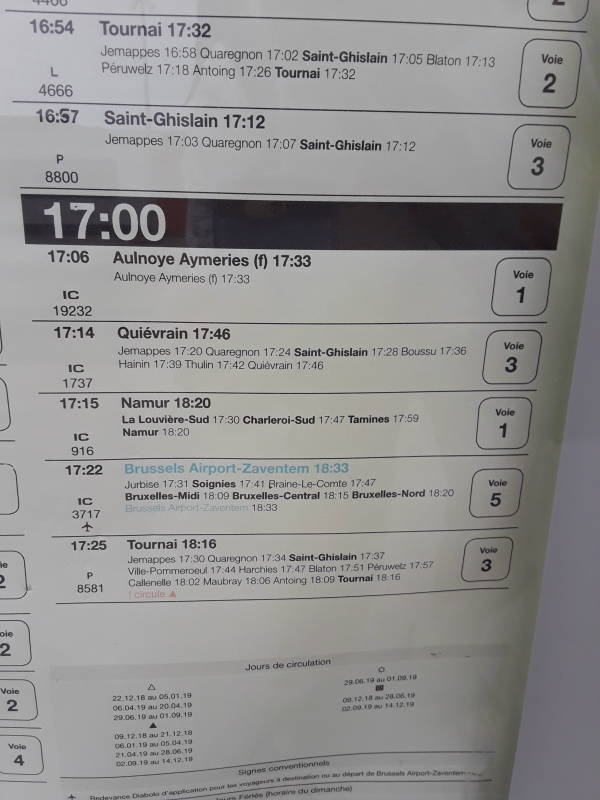
Here's my ride. There's a two-level train like this every half hour, in each direction.
Mons may have economic problems, but it makes where I live in the U.S., with crumbling to non-existent infrastructure, look pitiful. I have access to only three trains a week, and the supposed express inter-state highway is filled with holes the size of shoeboxes.

Yes, this is it. Let's get in.
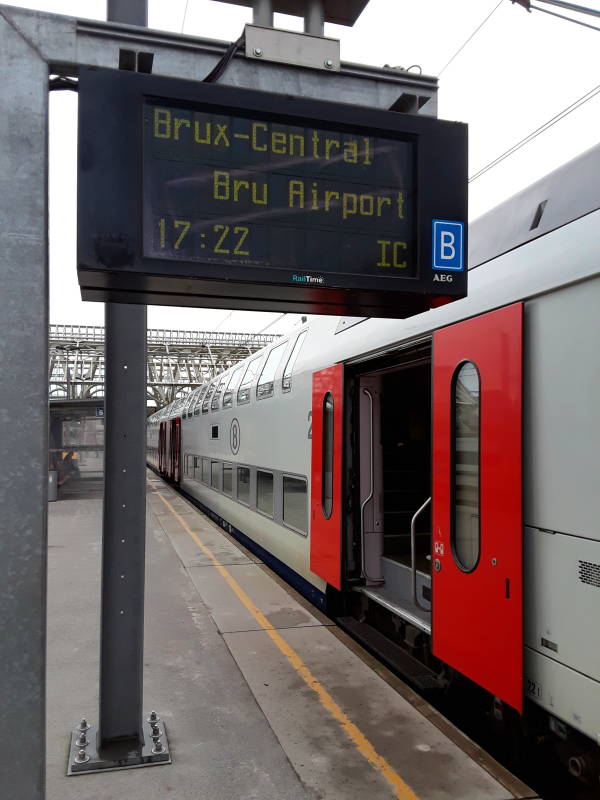

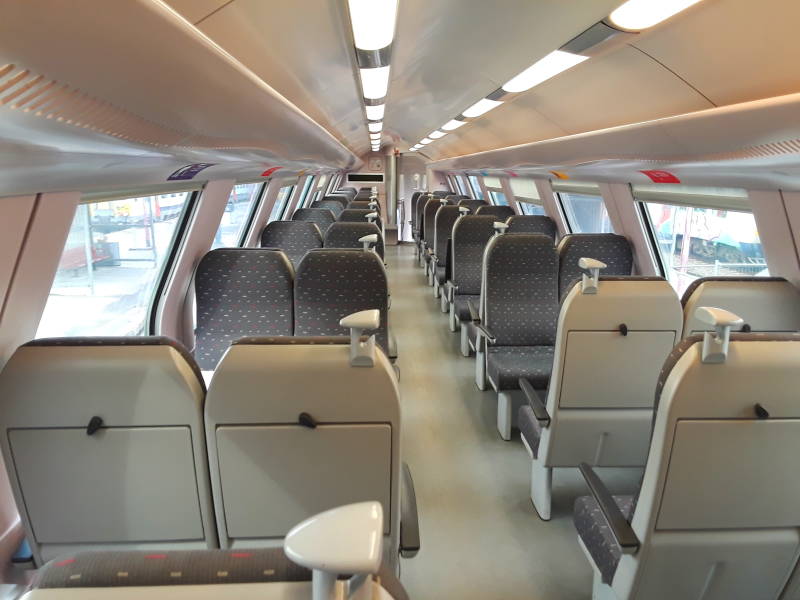
I have arrived in Brussels! The main Bruxelles-Midi station includes some relevant Tintin artwork.
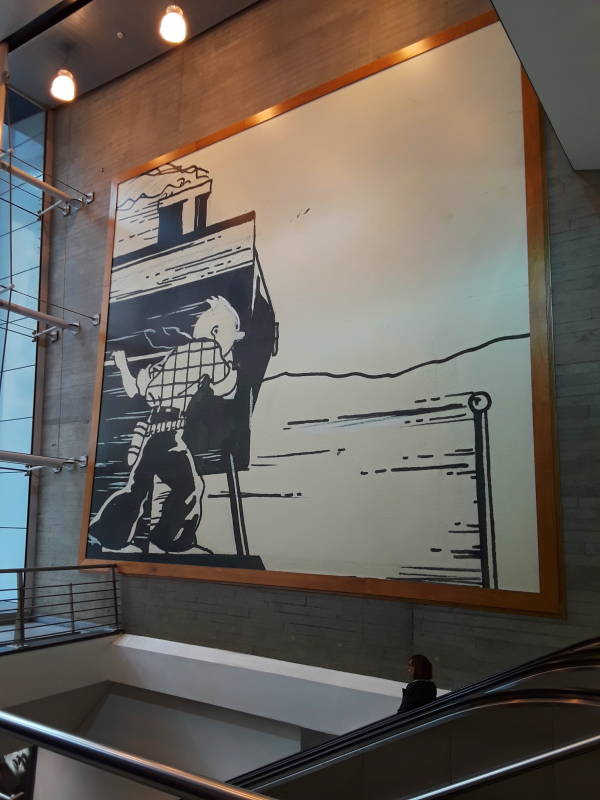

From Brussels to Paris
Now to buy a Thalys ticket for Paris. There are both Belgian Thalys and French TGV high-speed trains here.

Here's my train to Paris Gare du Nord.
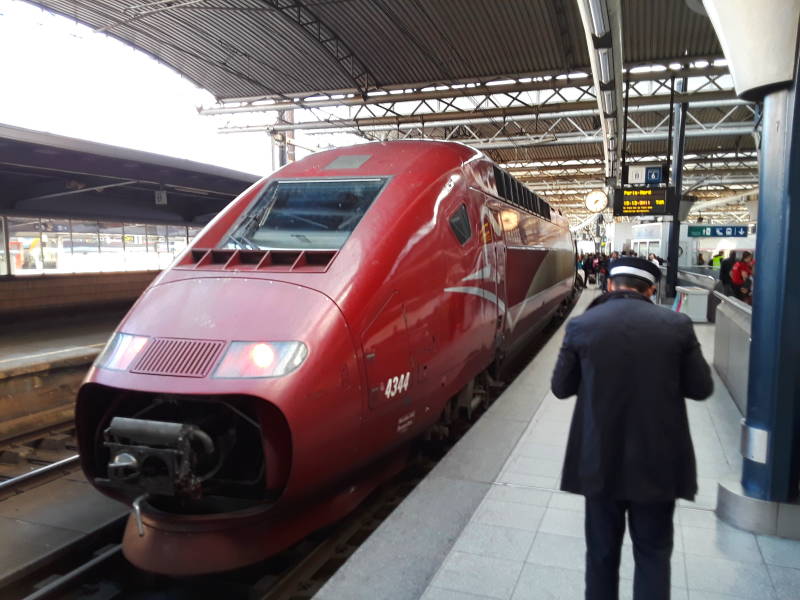
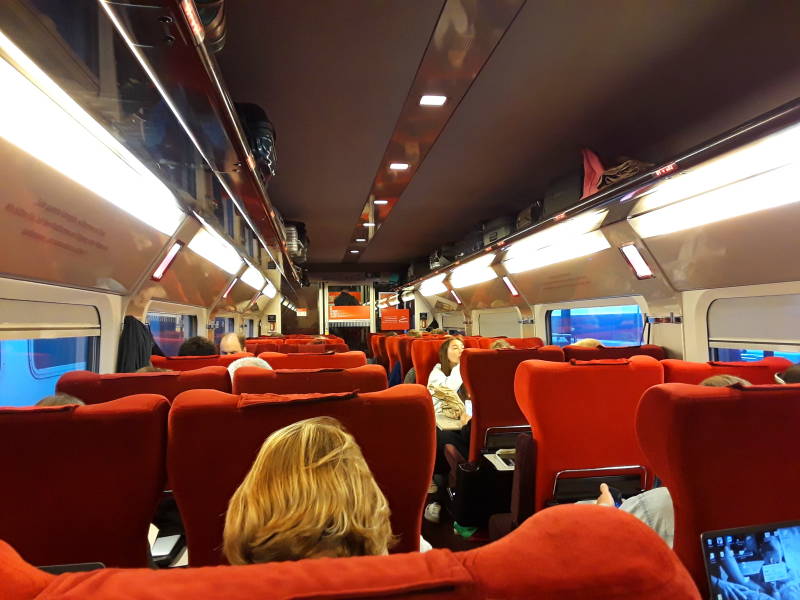
We have arrived! This is the Gare du Nord station in Paris.

Where next? Another destination in Belgium? Or somewhere in France?